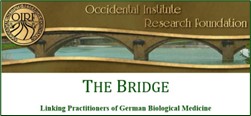UVLRX Intra-Vascular Light Therapy
and Heart Rate Variability
Summary
Stress causes inflammation, which accelerates aging. Stress can both be effectively measured and quantified, using Heart Rate Variability. The results of UVLRX, treatment, a unique intra-vascular light therapy, can be measured using heart rate variability, and can be shown to have great therapeutic value.
We are all aware of the deleterious effects of stress. There are many types of stress. Mental Stress occurs in a college freshman taking his first set of final exams. Anger and fear are examples of Emotional Stress. Nutritional Stress occurs when someone eats a food that he/she has a reaction to, such as gluten or dairy. An example of Environmental Stress is exposure to pesticides, when eating GMO food. Being injured in an automobile accident and having surgery are Physical Stressors. And lastly, Infectious Stress occurs as a result of an acute viral or bacterial infection.
In all of the above stressful events, Inflammation is the result. This is mediated through the release of inflammatory cytokines, such as NF Kappa B.
Stress can be effectively measured using Heart Rate Variability. This technology assesses the rhythm by identifying beat to beat variability. As an example, if one has a pulse rate of 60 beats per minute, and each beat is exactly 1 second in length, then there is no heart rate variability, and that person is at great risk for a chronic illness. However, if one beat is 1.00 seconds in length, followed by the next beat at .98 seconds, followed by the next beat at 1.02 seconds in length, then there is excellent heart rate variability, and thus a healthy person.
Heart Rate Variability is used to analyze the health of the Autonomic Nervous System, the automatic, or sub-conscious nervous system, that among other things controls processes that we don’t have to think about, such as your next heart beat, or your next breath. Besides the cardiovascular and respiratory systems, The Autonomic Nervous System (ANS) has effects on the other major systems of the body, such as the Immune System, the Gastro-intestinal System, and the Endocrine System.
Research into HRV has shown that lowered HRV is associated with premature aging, diminished hormone activity, and an increased risk of sudden cardiac death after an acute myocardial infarction. Other research has found that depression, panic disorders and anxiety are also associated with lowered HRV.
The Autonomic Nervous System controls all physiological and metabolic processes within the body. It has two divisions – the sympathetic nervous system and the parasympathetic nervous system. The sympathetic system is your left brained, performance, energy expenditure system, whereas the parasympathetic is your right brained, creative, energy recovery, relaxation system. If this were an athletic event, the sympathetic would be how fast did you run the 100 yard dash, and the parasympathetic would be how long did it take you to get your breath back.
For this test, a sensor is attached to the chest area to record the heart beat for two minutes while the patient is lying down, and for another two minutes when the patient stands. When a patient stands, it is more difficult for the heart to get blood to the head because of gravity, and this represents stress in this test. The results are then graphed, to reveal the activity of the sympathetic and parasympathetic nervous systems, with values ranging between +4 to -4 for each system.
We are all familiar with the negative effects that toxins have upon the body, producing harmful free radicals which have been linked to premature aging and a wide range of disease, including cancer, heart attack and stroke. As a result, anti-oxidant therapies that neutralize free radicals are an important part of all comprehensive health care approaches.
But there is a different type of therapy that is also available. It’s called oxidative therapy, and has been shown to be effective in killing bacteria, viruses, and fungus. An example of oxidative therapy is ultraviolet blood irradiation (UBI). Ultraviolet blood irradiation has been used in this country since the early 1900’s. Emmett Knott pioneered the irradiation of autologous blood on dogs before treating a moribund woman with post-abortion sepsis in 1933 who was thought to be untreatable. With his treatment of blood irradiation, she promptly recovered, resulting in more research and further development of the “Knott” technique.
By the early 1940s, UV blood irradiation was being used in several American hospitals. Into the late 1940s, numerous reports were made about the ability to treat infection, and the complete safety of UV blood irradiation. With the emergence of antibiotic therapy, the reports suddenly ceased. German research on UVB documents a rise in oxygen consumption and oxidation within the body, as stimulation of mitochondrial oxidation results in greater ATP production.
A new and innovative technology, the UVLRX StationTM from UVLRX Therapeutics, offers a significant improvement in ultraviolet blood irradiation (UBI). Until now, UBI has been administered via an extracorporeal technique, which involves the extraction, irradiation, and return of approximately five percent of a patient’s total blood volume. The blood, once drawn, is irradiated with a single wavelength within the ultraviolet light spectrum, and then returned to the patient’s body.
The UVLRX StationTM significantly improves upon traditional UBI methods in a number of ways. First, it eliminates the need for blood to be drawn before it can be irradiated with ultraviolet light. Instead, it makes use of a ground-breaking intravenous delivery system that delivers UV light directly into the patient’s vein, without the need for tubes, pumps, or cuvettes (small glass tubes) filled with circulating blood. During treatment patients sit comfortably in a chair while an IV is started. A thin fiber optic cable is attached to a small, plastic hub, called a Dry Light AdapterTM (DLATM) that integrates an IV saline drip with a fiber optic delivery mechanism.
The biggest advantages of the UVLRX Station, however, go far beyond the ease and convenience it provides compared to other UBI methods. During treatment, 100 percent of a patients’ total blood volume receives light therapy, in contrast to the 5 percent total blood volume that is treated using traditional UBI. Additionally, the UVLRX StationTM delivers three specific wavelengths of light tailored to achieve desired clinical effects. During the first 30 minutes the patient receives UV-A (365 nm ) and red light (635 nm). During the next 30 minutes the patient receives red light and green light (535 nm).
Use of these different wavelengths improves and expands the therapeutic potential of the UVLRX Station. Each wavelength targets naturally-occurring photoreceptors in cells. When stimulated with light, the photoreceptors activate key biochemical pathways, generating the therapeutic effect. UV-A inactivates pathogens, the red light stimulates the immune system, and the green light improves the microcirculation.
I conducted a study to objectively evaluate the effects of UVLRX. Seven patients were selected. Initially, a heart rate variability test was performed, followed by the 1 hour UVLRX treatment, which was immediately followed by a 2nd heart rate variability test.
The results in all seven patients showed the following;
- An improvement in parasympathetic tone
- A reduction in sympathetic tone
- A marked reduction in stress levels as measured by the tension index (TI)
- An increase in myocardial cell energy production ( a lowered ChMR)
Conclusion:
Intravenous light therapy via the UVLRX system has a remarkable beneficial effect on the health of the autonomic nervous system, and can be of great value in optimizing health.
Please follow this link to see linked article: Comments & a Dilemma, by Carolyn Winsor
Please follow this link to see linked article: Cautionary Comments. by Dr. Ted Cole
 An Exclusive Article for OIRF Supporters
An Exclusive Article for OIRF Supporters
From THE BRIDGE Newsletter of OIRF
Published April 2016
© Copyright 2016, Dr. Michael Galitzer, California, USA



